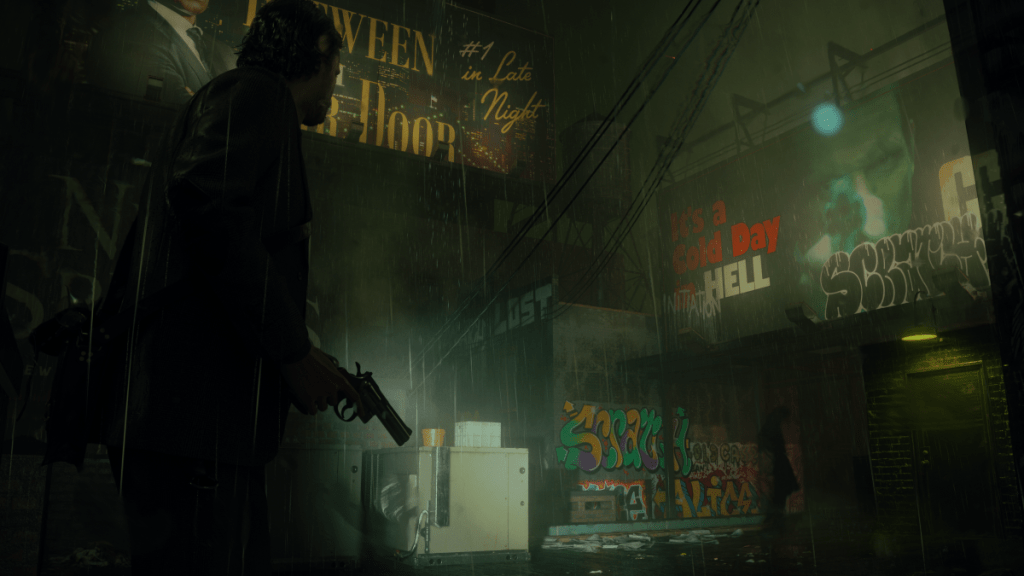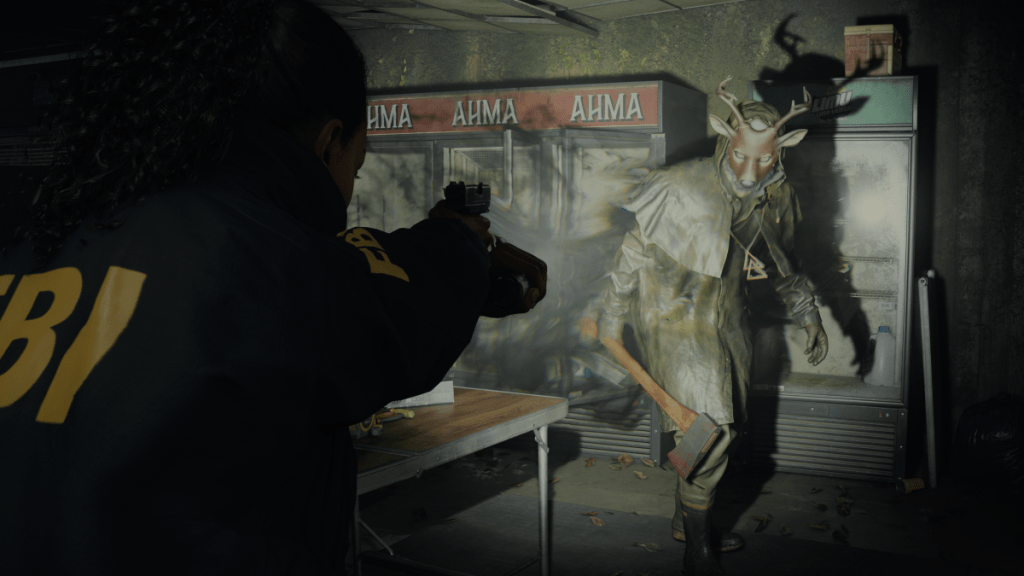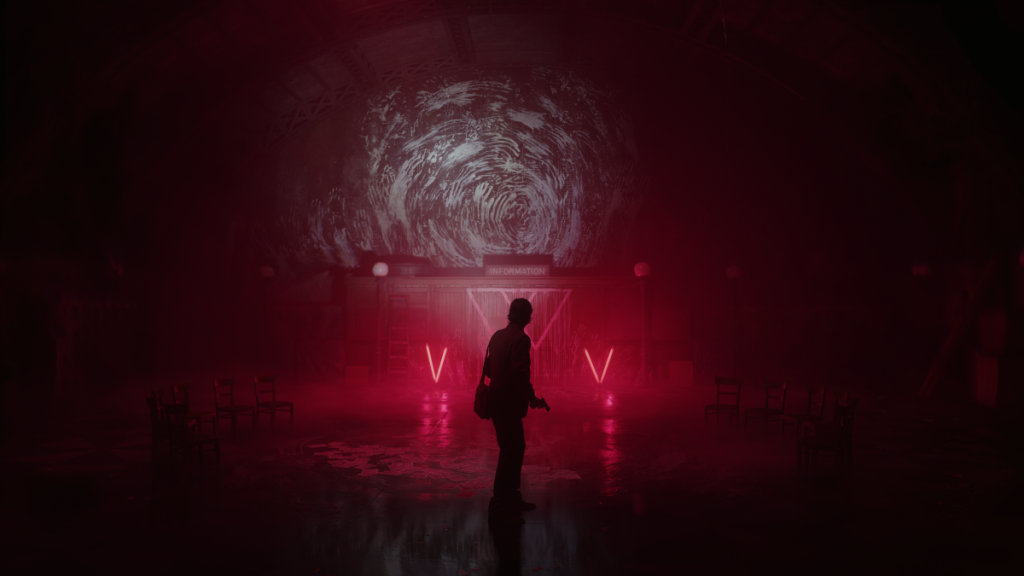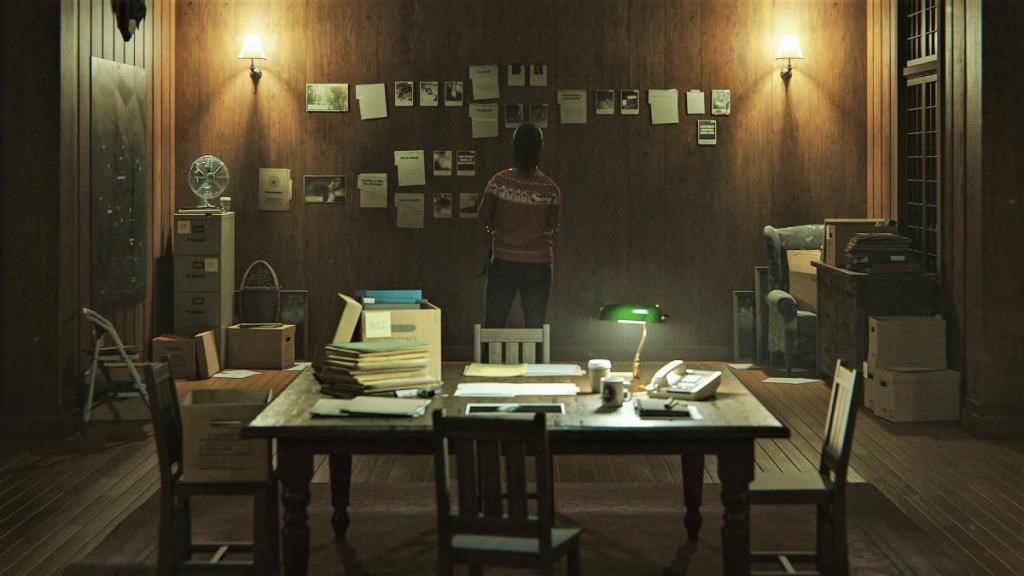After 13 years of anticipation, Alan Wake 2 has finally arrived, and Remedy Entertainment has exceeded all expectations. For those who experienced the original game’s launch back in 2010, this sequel is a dream realized. It’s not just a good game; it’s a phenomenal experience, ranking among the most impressive AAA titles in recent years.
Alan Wake 2 picks up with the titular author trapped in the “Dark Place,” a nightmarish realm where he’s been imprisoned for over a decade. Simultaneously, FBI agent Saga Anderson arrives in Bright Falls to investigate Alan’s disappearance, a case intertwined with other unsettling events unfolding in the town. Players control both Alan and Saga, switching between their perspectives throughout the compelling 20-25 hour campaign.
The narrative is a masterclass in storytelling, resolving lingering questions from the original Alan Wake while expanding the world and deepening its characters. The plot is filled with unexpected twists and turns that will keep you on the edge of your seat. Days after finishing the game, certain moments still resonate with a profound sense of wonder. Remedy’s writing, led by Sam Lake, is exceptional, crafting a compelling narrative with well-developed characters. New additions like Saga Anderson seamlessly integrate into the established universe, becoming integral to the overall experience.

Alan Wake 2‘s narrative achieves remarkable depth without ever feeling overwhelming. It not only tells a self-contained story but also cleverly weaves itself into the larger “Remedy Connected Universe,” which began with Control. The game is brimming with meta moments and self-referential nods to other Remedy titles, adding another layer of intrigue for long-time fans.
While the interconnected narrative might seem complex, especially for newcomers to the Remedy universe, the core storyline remains accessible. The deeper references are a rewarding treat for seasoned players but never overshadow the main narrative. This careful balance ensures everyone can enjoy the captivating story.
Alan Wake 2 marks Remedy’s first foray into the survival-horror genre. The studio expertly blends its signature blend of psychological thriller and action with genuine horror elements. The game’s visuals play a crucial role in establishing this unsettling atmosphere.

Alan Wake 2 is visually stunning, pushing the boundaries of photorealism in gaming. The lighting is particularly breathtaking, especially during Alan’s segments. Remedy’s artistic direction shines through, creating a cohesive and unique aesthetic. From dense forests to dimly lit urban environments, every location is a visual feast.
The game’s visuals are integral to its horror experience. Alan Wake 2 relies on psychological horror and a grim atmosphere to create tension rather than relying solely on jump scares. While there are moments designed to startle, the overall sense of dread is what truly makes the game unsettling.
The core gameplay mechanics are familiar to survival-horror fans. Resources are limited, inventory management is crucial, and enemies are formidable. Combat retains the light-based mechanics from the original Alan Wake, requiring players to weaken enemies with light before finishing them off with conventional weapons. The arsenal includes returning tools like flashbangs, flares, and flareguns, alongside a selection of firearms.

Alan Wake 2 distinguishes itself with unique abilities for both Alan and Saga. Saga utilizes the “Mind Place,” a physical manifestation of her thoughts, to connect clues on her Case Board and uncover new leads. While a compelling concept, the Mind Place lacks depth, often resorting to trial and error rather than genuine deduction. However, it serves as a helpful repository of story information.
Alan can manipulate reality within the “Writer’s Room,” a concept central to the series. This mechanic offers intriguing puzzle-solving opportunities, especially when combined with Alan’s lamp tool, allowing him to alter the environment and open new pathways.
The performances in Alan Wake 2 are outstanding. Returning cast members and new additions deliver compelling portrayals that elevate the already strong writing. The inclusion of live-action cutscenes further showcases these performances.

Remedy’s integration of live-action has evolved since Quantum Break, reaching a new peak in Alan Wake 2. The seamless blending of gameplay and live-action enhances the storytelling, creating unforgettable sequences.
One minor drawback is the game’s performance. While visually impressive, maintaining a stable frame rate, even in Fidelity mode, can be challenging, particularly in areas with dense foliage. However, recent updates have improved stability, suggesting ongoing optimization.
Alan Wake 2 is a masterpiece. It’s Remedy’s best game to date and solidifies their position as a leading AAA developer. The game is inventive, witty, and capable of both terrifying and amusing players within the same breath. It sets a new standard for story-driven, third-person action games and is a must-play for both newcomers and long-time fans.
Rating: 5 out of 5
Alan Wake 2 is available now on Xbox Series X/S, PlayStation 5, and PC. A review copy was provided by the publisher for this review, and the game was played on a PlayStation 5.











